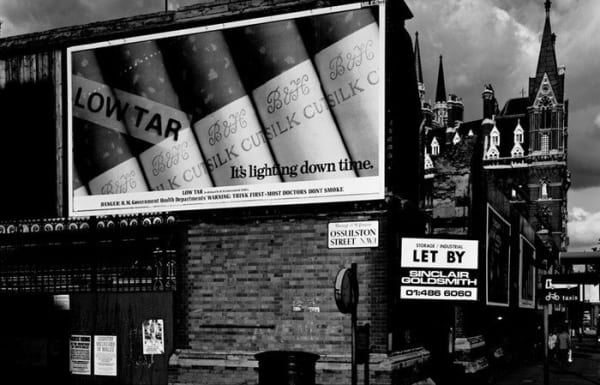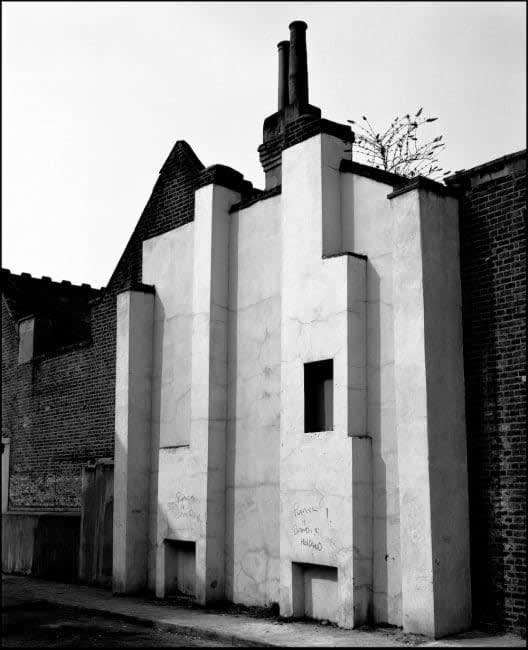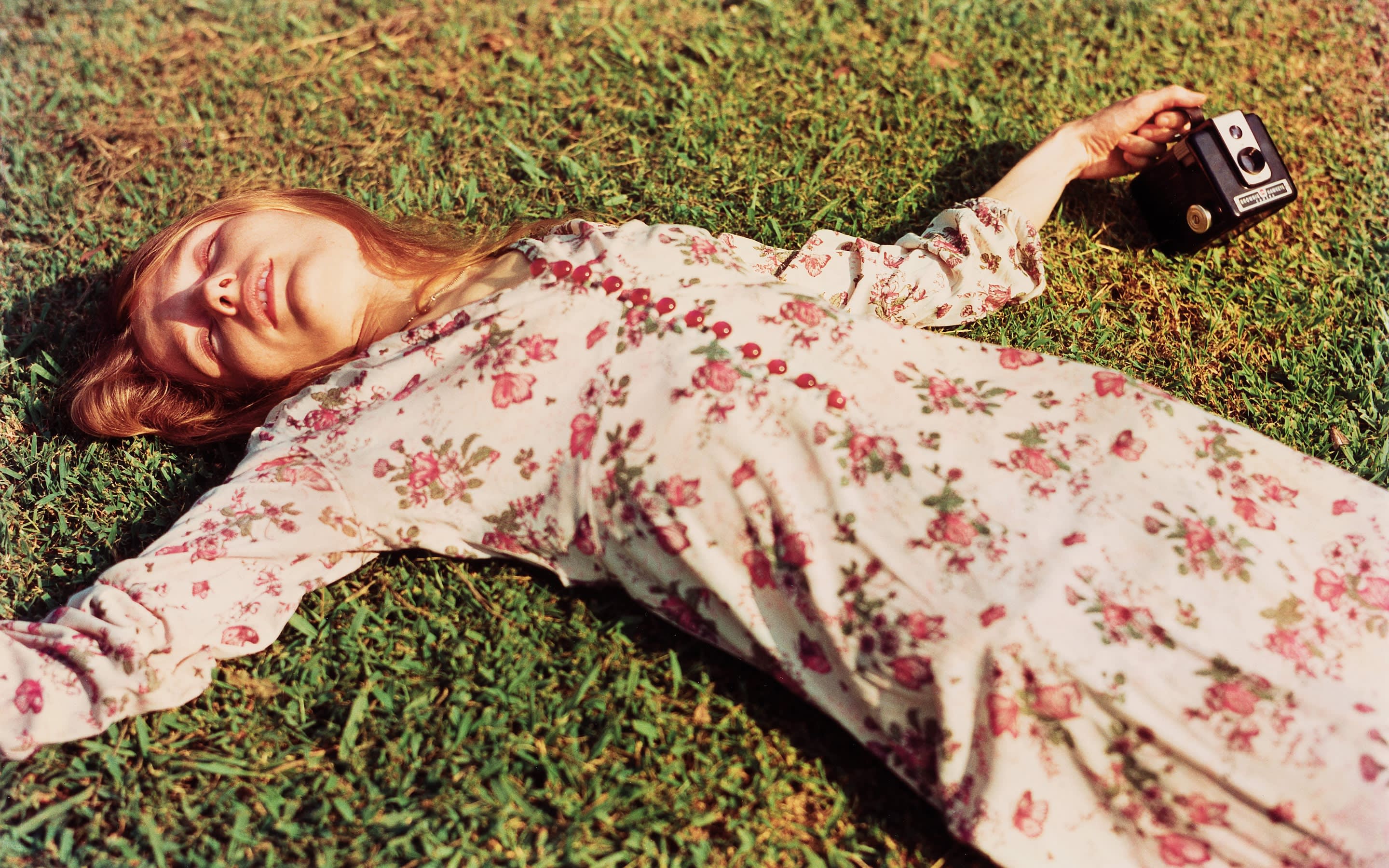We do not normally associate Bailey with landscape photography however, and It is against the background of his more renowned work that we perhaps look at NW1. This is a series taken in 1982 of the urban landscape in that part of London where Bailey grew up – an area that stretches between Kings Cross, Primrose Hill and Camden. It is now largely gentrified and expensive but as recently as the eighties there were many areas that were remained as they were in Baileys childhood.
In a preface entitled ’Notes’ Bailey describes air raids, broken glass and derelict buildings. “These were the first buildings that I knew” he says “and they had a gothic effect on me. The facade of a building is like a persons face, it tells its history.” His comments provide an easy link to his portraiture and it is easy to pick out the similarities in the chiaroscuro style, cropping and contrast and the enduring influence of Brandt.
It is immediately evident in the opening image, Manley Street ,1982 , which pictures the pale concreted end of a terraced building, the black alcove and gentle cracking drawing parallels with a face. The adjoining buildings are deep in shadow, the sky over exposed and featureless. There are no people or extraneous detail. This is a portrait of a building with a story and a past.
The Aerated Bread Company and Shop, 1981 is another building with a definite past, its paint peeling and windows shuttered. In Clarence Passage, 1982 the Cuddley Toys Limited shop is shut down, a gas holder silhouetted behind, in a dreary street that is part industrial and seemingly forgotten. In Printing Works, Euston Road, 1981 the building is semi derelict its entrance covered with corrugated iron, plastered in posters.
Occasionally there is a tatty car or some graffiti or a passer by, head down, shuffling by. The only image with more than a couple of figures is Primrose Hill, 1981 but it is impersonal. Visitors to the park are distant black spots, blurred against the snowy ground or silhouetted against a featureless white sky – a solitary lamp post the main feature.
There is a certain cool detachment here, a hint to the influence of Bernd and Hilla Becher on 20th Century imagery, but as a collection it is clear that this is not just an impassive record. We know of Bailey’s history here and we can sense – and see – a more emotional attachment. This is more a library of very personal memories, a homage to his childhood London.
HENI Books have collaborated to republish the original 1982 Weidenfeld & Nicholson book, an edition that is now very rare and desirable. They have done an excellent job with a photographic cloth cover that features Primrose Hill, 1981 and fourteen superb quality black and white images on heavyweight stock.
The edition is signed by the artist, hand-numbered and limited to 1,000 copies. It includes an image exclusive to the edition alongside an originally commissioned text by Francis Hodgson, former photography critic for the Financial Times.




